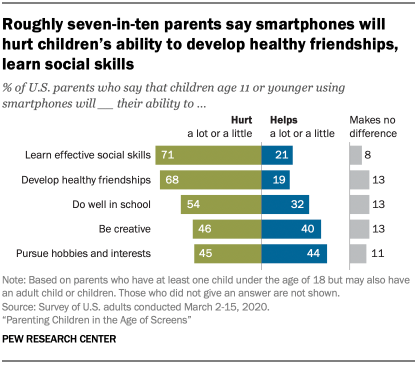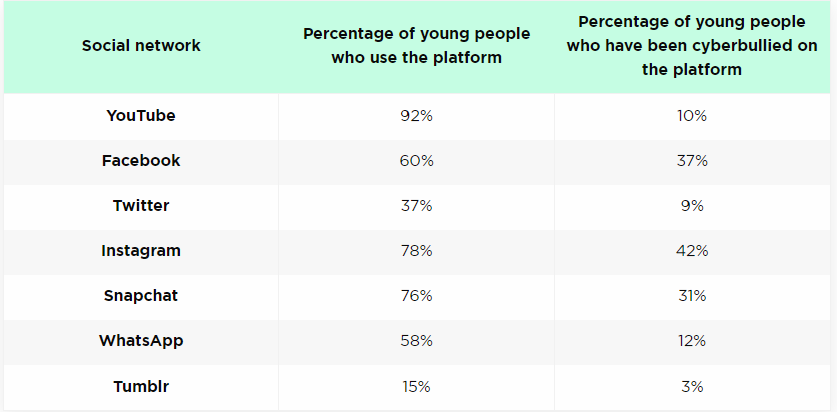
Moonpreneur
In this modern world, children come in contact with technology early and are ”growing up digital.” So, it has become crucial to help them learn healthy concepts of technology use and keep them safe from harmful effects. Here, parents have a vital role to play in teaching these skills.
According to the Pew Research Center, 71% of American parents with children aged 11 and under are concerned that their child spends too much time in front of devices.

Source: Pew Research Center
As a result, the parent must set the limit to ensure kids’ healthy and positive upbringing. This blog will explore effective strategies and practical tips to help parents strike a harmonious equilibrium between technology and parenting.
1. Understanding the Benefits and Challenges
Before we delve into finding the right balance, we must acknowledge the benefits and challenges of technology. Technology offers numerous educational resources, enhances communication, and encourages creativity. However, excessive screen time, cyberbullying, and a sedentary lifestyle are some challenges associated with unchecked technology use.
Data on cyberbullying on different social media platforms

Source: Security.org report
2. Lead by Example
Children learn primarily by observing their parents’ behavior. Parents should set a good example of healthy technology habits to find the right balance. You can demonstrate responsible technology use by limiting screen time, engaging in offline activities, and prioritizing face-to-face interactions. This way you set the stage for your children to follow suit.
3. Establish Clear Guidelines
Setting clear guidelines and boundaries is crucial in maintaining a healthy balance between technology and parenting. Establish rules regarding screen time limits, appropriate content consumption, and device-free zones.
Involve your children in creating these guidelines, making them feel more invested and responsible. Consistency is the key; ensure that the rules are enforced consistently to avoid confusion and frustration.
4. Encourage Mindful Technology Use
Help your children develop a mindful approach to technology by teaching them to be intentional about their usage. Please encourage them to prioritize quality content, engage in educational apps, and limit mindless scrolling.
Teach them the importance of taking breaks, engaging in physical activities, and spending time outdoors. By fostering mindfulness, you empower your children to make conscious choices about their technology consumption.
5. Embrace technology as an Educational Tool
Instead of viewing technology as a hindrance, embrace it as a valuable educational tool. Utilize educational apps, interactive learning platforms, and online resources that align with your child’s interests and developmental stage.
Engage in joint activities incorporating technology, such as watching educational videos, exploring informative websites, or playing educational games together. You can transform technology into a positive learning experience by consciously embracing technology.
6. Foster Open Communication
It is also essential to maintain open and honest communication with your children. Try to get time regularly to talk with your children, make a friendly bond, and encourage them to share their experiences, challenges, and concerns regarding technology. Create a comfortable space for kids to discuss cyberbullying, online privacy, or any negative experiences they may encounter. You can provide guidance, address their concerns, and ensure their safety online through open communication.
7. Set Tech-Free Quality Time
Incorporating tech-free quality time into your daily routine is vital for building stronger relationships and promoting a healthy balance. Specify particular times during the day or week when all devices are put aside and the focus is solely on bonding as a family.
Engage in activities like board games, outdoor play, reading, cooking, or conversations.
8. Monitor and Use Parental Controls
While trust is essential, monitoring your child’s technology usage is crucial for their safety and well-being. Install parental control apps or software that allow you to monitor their online activities, set screen time limits, and block inappropriate content.
Regularly discuss online safety, responsible social media usage, and the potential dangers of sharing personal information.
9. Encourage Offline Hobbies and Activities
To develop a healthy lifestyle:
- Encourage and nurture offline hobbies and activities.
- Engage your children in sports, arts and crafts, music, reading, or any other interests they may have.
- Create a schedule that incorporates a variety of activities, both online and offline, to promote a well-rounded development.
10. Stay Informed and Adapt
Technology constantly evolves, and parents must stay informed about the latest trends, apps, and digital risks. Stay updated on new social media platforms, online games, and potential cyber threats.
Engage in conversations with other parents, attend workshops or seminars on digital parenting, and stay connected with your child’s school to understand their approach to technology.
Conclusion
Finding the right balance between technology and parenting is an ongoing process. Parents can create a healthy digital environment by understanding tech’s pros and cons, setting guidelines, promoting mindfulness, and fostering open communication.
Embrace technology as a learning tool, schedule tech-free quality time, use parental controls, encourage offline hobbies, and stay informed to achieve a harmonious balance. Create a nurturing environment where technology aids rather than hinders your child’s development.
Moonpreneur is on a mission to disrupt traditional education and future-proof the next generation with holistic learning solutions. Its Innovator Program is building tomorrow’s workforce by training students in AI/ML, Robotics, Coding, IoT, and Apps, enabling entrepreneurship through experiential learning.






















